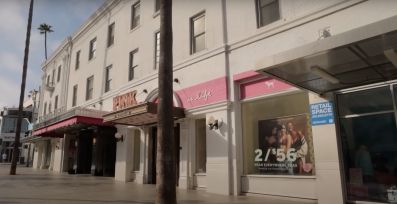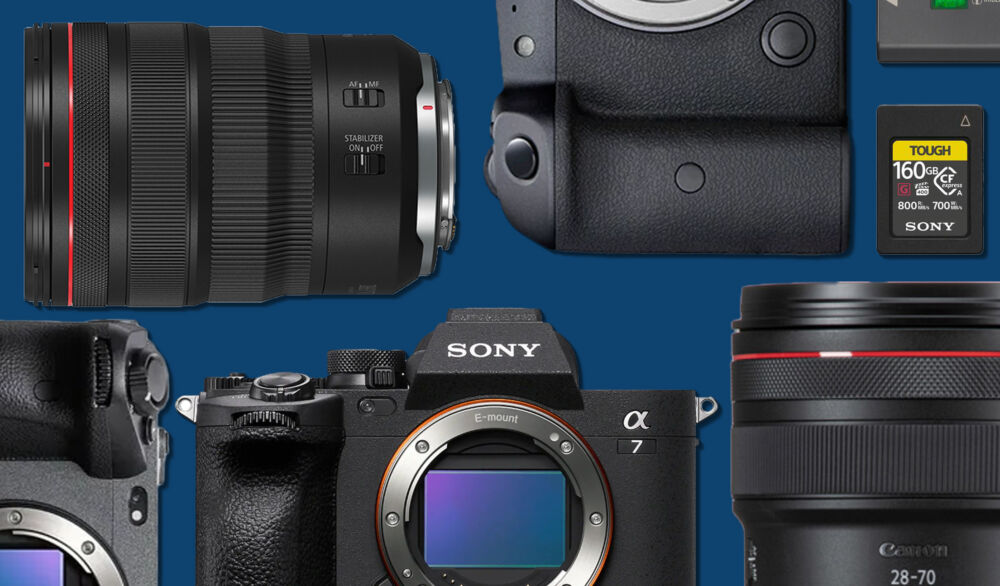We’ve teamed up with Adorama to bring you a new series of photography tutorials called “Master Your Craft” to be featured on their YouTube Channel. Subscribe to see more of our videos on their channel throughout the next couple of months that will cover photography, lighting, posing, and editing education to help you hone your skills and master your craft.
In this video, Pye addresses the common misconception that flash doesn’t look natural by teaching you creative flash photography techniques for both natural and dramatic portraits in four simple steps.
Video Tutorial for How to Make Flash Look Natural or Dramatic in Four Simple Steps
What We Think Flash Photography Must Look Like
A lot of us avoid using flash because we like a more natural look to our images, but this is really just a misconception. Most people tend to think of a direct flash look when they think of flash photography, like that featured in the image below.

While direct flash has its place and can be appealing, it represents only one way to use flash to light a scene. Another look we typically think of when it comes to flash photography can be seen in the images below, which are more dramatic with dark backgrounds and subjects who’ve been noticeably lit with flash.

Again, this dramatic look has its place, but it does not represent the full spectrum of creative flash photography.
What Flash Photography Can Look Like
Getting the “right” light, whether that means natural-looking light or more dramatic looking lighting, depends in large part on your intentions. Luckily, it’s easier than you may think to use creative flash photography techniques to get the look you’re after in your photos for both styles of lighting.
Balancing Ambient Light and Flash Power
You’ll notice in the slides below (from our Lighting 101: Intro to Flash Photography workshop) that the image effect (dramatic vs. natural) depends on how we expose for ambient light in correlation with our flash power settings. Click on the image to enlarge it.

According to the slides, a dramatically lit image will use less ambient light alongside a brighter flash power setting while a natural-looking image will require a brighter ambient exposure with less flash power.
Using the ideas expressed in the slide above, you can see how we’ve used flash photography to create natural-looking light in the following images.


When you look at the images above, where we’re going for natural-looking flash, our base exposure is already very bright. The flash simply adds a half-stop of light or so to the subject. It almost looks like we could’ve achieved this look by using a reflector. The benefit of using a flash over a reflector, however, is that flash it’s less likely to cause your subject to squint and you have more control over how much power the flash is putting out.
Say Hello to the CAMP Framework
We’re going to use the CAMP framework (Composition, Ambient Exposure, Modify or Add Light, Pose & Photograph) to outline the steps we took to compose, light, and capture the final image.
Step 1. Scout the Scene to Create an Ideal Composition
Before you pick up your camera, scout the scene to find the best area and angles to use when composing your shot. It shouldn’t take more than a couple of minutes once you’ve chosen a spot to figure out your composition.
Step 2. Dial-In Your Ambient Exposure
We’re ultimately going to use flash to light our subject, but before we do that, we need to know what look we’re going for. This is where our intention comes into play. Will the final image have a more dramatic or natural look? Once you decide, refer to the slide above and dial in your ambient exposure. Remember to darken the ambient light in camera and increase your flash power for dramatic portraits, and adversely, brighten the ambient exposure and decrease the flash power for more natural-looking portraits.
Before moving on to step 3, go ahead and snap a test shot with your subject in the frame (if possible) to ensure that the ambient exposure is set to your liking.
[Related Reading: Direct Flash vs. Bounce Flash for Beautiful Light Anywhere]
Step 3. Add Light to Your Subject
You can choose to modify existing light with reflectors, or you can add light with an external flash, which we noted earlier is beneficial in that it minimizes squinting and gives you more control over light output. Start with one light to light your subject, dial in your settings, and then use additional external flashes if necessary. The power setting for your flash will again depend on your intentions for the final image. Dramatic images will require more flash power while natural-looking images will require less flash power.
BONUS TIP: Start with the Inverse of Your ISO. If you’re at ISO 1600, set your flash power to 1/16th power and start there. If you’re at ISO 100, start at 1/1 power. From there, dial the power up or down depending on the results and how they match your intentions for the shot. It’s easier to remember this general rule than trying to memorize flash power settings for every scenario. Plus, by following this general rule, you’ll likely only need to fire off one or two test shots to dial in your settings.
Step 4. Direct Your Subject into a Pose
After dialing in all of your settings, it’s time to focus on posing your subject. The best part is because you’ve already handled the technical side of the image in terms of camera and light settings, you can focus your energy and attention specifically on your subject, which should allow your creativity to really shine through.
Once you’ve captured your shot and you’ve moved to a new scene, start the CAMP framework all over again.
[Related Reading: Official Couples Posing Guide – Tips, Cues, & More!]
And there you have it! As you can see, making simple adjustments in the balance between ambient exposure and flash power settings can make a dramatic difference in the final image; it just depends on which direction you want to go. Once you’ve decided on a look, the rest is easy!
If you’re just getting started on your flash photography journey, check out our Lighting 101 workshop, which was designed specifically to professionally light your images with minimal gear (typically using one on-camera flash, occasionally alongside a 5-in-1 reflector). For those looking for more advanced flash photography techniques, our Lighting 4 workshop will show you how to use multiple off-camera flashes to mimic natural light, from soft window lighting to re-creating golden hour with sun flares and more. Finally, for more information on a wide range of lighting techniques, don’t miss our Flash Photography Training System, a go-to collection of four lighting courses that will teach you how to use flash on and off the camera with expert precision using the gear you have available.













